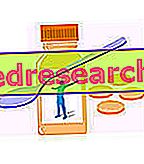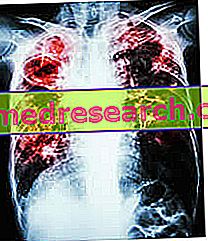If a cell in mitosis is subjected to the action of substances such as colchicine, called mitotic, or antimitotic, or still statmocinetic, the mechanism of migration of centromeres in the melt is blocked and the chromosomes remain at the metaphase stage. With appropriate techniques it is possible to fix, photograph and enlarge the chromosomes, arranging them in a series ordered according to well-defined classification criteria (relative position of the centromere and size). A cariogramma is thus obtained for each cell; the average value (to avoid single errors) constitutes the individual karyotype.
The most easily detectable chromosomal aberrations are those for trisomy, monosomy or nullisomy. These correspond respectively to the presence of three, only one or no chromosome of a given type. The presence of only one or three chromosomes may be compatible with independent living, albeit with often very serious morphological and metabolic alterations, altering the normal balance of dosage and interaction between genes; nullisomy is to be considered lethal, as the total lack of all the genes contained within a chromosomal pair cannot be compensated.
A classic case of trisomy is the "trisomy 2" or Down syndrome, commonly known as "mongolism".
A case of monosomy occurs, as we will see, in Turner syndrome, in which there is only one gonosome (X).
Aberration can be distinguished by translocation from that by non-meiotic non-disjunction. The cause, the effects, the hereditary transmission and consequently the eugenic prediction are different, as is the cytological survey.
CITOPLASMATIC HERITAGE
All the genetic treatment carried out so far is based on the study of the behavior of nuclear DNA, of its transmission, of its relationships with the cytoplasmic and external environment.
Although the role of the nucleus in heredity is absolutely prominent, there are also phenomena of hereditary transmission linked in various ways to the cytoplasm. For example, cytoplasmic organelles with their own genetic continuity (mitochondria, plastids, centrioles) may exhibit inherited transmission phenomena separate from nuclear ones, albeit with complex interactions. Also the content of reserve material that the maternal organism supplies to the embryo for its initial development can determine phenomena of cytoplasmic inheritance. In general, it can be stated that the expression of hereditary heritage is variously conditioned by the interaction with cytoplasmic and extracellular environment factors.
Edited by: Lorenzo Boscariol



